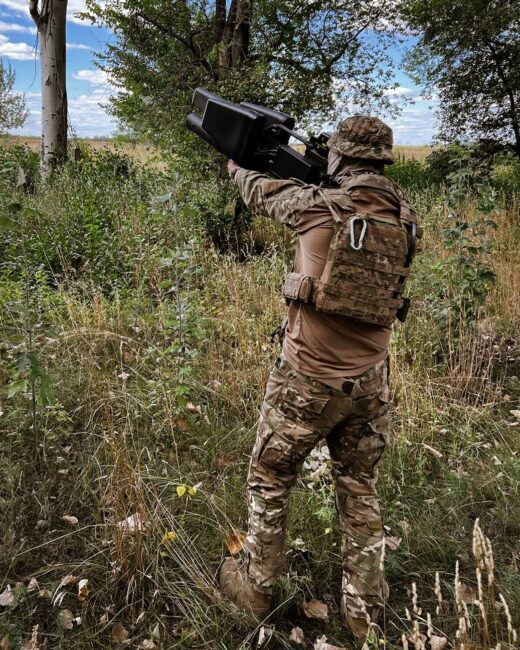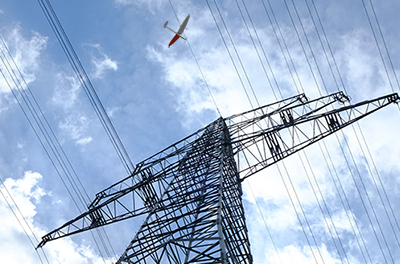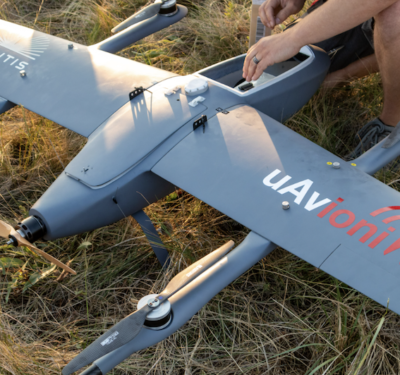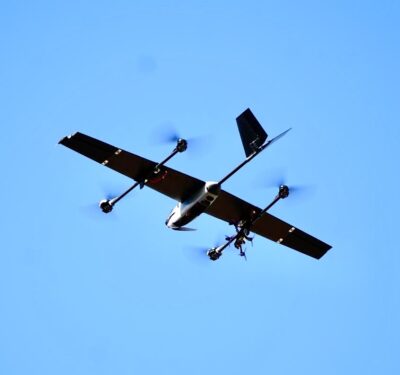
While prepping for the first two interviews (here and here), UNITED24 indicated some of my questions were possibly too sensitive. But my questions didn’t get tossed out. Instead, they were forwarded for review by the State Special Communications Service (SSSCIP) entrusted with enforcing Ukraine’s information security and battle-tested cyber defenses. Its chief, Brig. Gen. Yurii Shchyhol, took it upon himself to respond to several of them in a substantial email regarding which kinds of drones were contributing most to Kyiv’s war effort.
Sébastien: Which foreign drones, of those currently used in Ukraine, are the most useful, and why?
Yurii: All drones, whether produced in Ukraine or abroad, are useful today. Each and every one of them has its own niche. All that’s needed is to know how to work with them.
For example, models such as Mavic or Matrice. As of today, these are multi-purpose drones that, while maybe not needed by every individual soldier, are absolutely crucial for every division and subdivision of the armed forces. Mavic drones in particular, which are installed with thermal vision systems, allow for reconnaissance at any time of the year, day or night, saving our heroes countless times.
Currently, Ukraine requires an incredibly large number of drones. Even though the government has already allotted approximately 40 billion hryvnia [over $1 billion USD] towards drone purchases in this year alone, we still need more drones. Any drones that we receive, both as part of the Army of Drones project and through international aid, help empower our forces and save defender’s lives.
Sébastien: What are the top three most important Ukrainian drones in service now or that will serve in the near future?
Yurii: Going back to what I said before: it’s impossible to name three or four “most useful” drones, as they all have their uses. Ask the different subdivisions which Ukrainian drone is the best, and they’ll name the ones they personally work with. Some prefer a Kazhan or Vampir, others favor the Pegasus. The armed forces have units that specialize in using drones, and each one has their own preferences and methodologies.
To read more of Sébastien Roblin’s reporting on Ukraine, and many of the systems mentioned in this story, go to the latest issue of Inside Unmanned Systems.
At the start of the full-scale invasion, we had approximately 30 companies that mass-produced drones in Ukraine. As of today, that number has tripled—around 90 companies work in this field now. It must be understood that each company produces not just a single series of drones, but anywhere from two to five varieties. UAV production is upscaling very quickly.
Leleka, Furia, Valkyrja, Mara, Pegasus—these are some of the most famous drones at the moment that come to mind. There’s also one interesting Ukrainian production, Cetus. After the start of the full-scale invasion, this company, which used to make camera drones for field work, has retrofitted their drones and created one of the best recon UAVs. Not just in Ukraine, but in the world. It provides a clear image, which is crucial for understanding and analyzing enemy movements.
These are fixed-wing military reconnaissance drones. The seven-pound ASU-1 Valkyrja, for example, has two hours of endurance, can be controlled from 22 miles away, and has HD and thermal cameras, the former with 10K zoom. The smaller (5.5-pound) hand-launched Mara-2 (for Modular Advanced Robotic Aircraft) has 90 minutes endurance but is effective out to 37-56 miles using pre-programmed waypoints.
The FLIRT Cetus drone by Kyiv-based Abris Design Group is a larger, catapult-launched system with a 61 Megapixel multi-spectral camera on gyro stabilized gimbal. It was originally designed for aerial mapping over wide area, such as for agricultural monitoring.
I believe that after the war, drone production in Ukraine will become a massive market that should give a much-needed push, not just to the development of this industry, but to the Ukrainian economy as a whole. For example, before the full-scale invasion, nobody even knew about Polish drones such as FlyEye, but their effectiveness in Ukraine has created a lot of demand, and now the company is full up on orders for years to come.
Sébastien: Are anti-UAV drones a worthwhile investment?
Yurii: Drones for fighting other drones are, potentially, a very useful thing. However, for them to properly defend the Ukrainian air space, this idea must be completely perfected. As of right now, anti-UAV drones are generally in the test stage of development, trying out new technologies. Currently not just Ukraine, but no country in the world has effective anti-UAV drones. There are interception systems, there are nets and jammers—but a drone that intercepts other drones—doesn’t exist yet.
That said, I will add that this is a very promising avenue of development. Many countries, such as Turkey and Israel, are actively developing in that direction. A drone that flies faster than another drone isn’t hard to make, but predicting and intercepting it, that’s the challenge. That’s what our developers are working on. Because catching up to another drone and understanding its behavior—that’s what requires elements of AI and analytics that are still being tested. There needs to be a fully functional system capable of drone detection, guidance, aim tracking, and only then can a drone like that be used.
Sébastien: How effective are anti-drone guns against UAVs?
Yurii: Anti-drone rifles are useful tools for radioelectric combat. They can be carried with you and they’re quite good at destroying enemy UAVs. If it’s a quality rifle, then it’s incredibly effective. The ones to prove themselves most effective are anti-drone rifles made in Ukraine and the Baltic states.
The “Baltic” drone gun is almost certainly referring to the 12-pound Lithuanian EDM4S Skywiper system, which has four 10-watt antennas designed to jam both the drone’s control signals and its access to satellite navigation such as GPS, GLONASS and others. Ukraine has received over 150 Skywipers, the majority crowd-funded by civilians. With a maximum range of two to three miles, it reportedly has proven effective against Russia’s Eleron-3 reconnaissance drones.
Ukraine’s most prominent domestic counter-drone gun is the Kvertus KVS G-6, effective out to 1.5-1.8 miles, including against Russia’s many Orlan-10 fixed-wing reconnaissance drones. The 80-watt weapon has six antennas and can also jam drone video feeds. The rival Ukrainian RIFF-P system has shorter range (.93 miles) but a more powerful 100-watt output.
Editor’s note: An unabridged version of this interview first appeared on Forbes.com.






